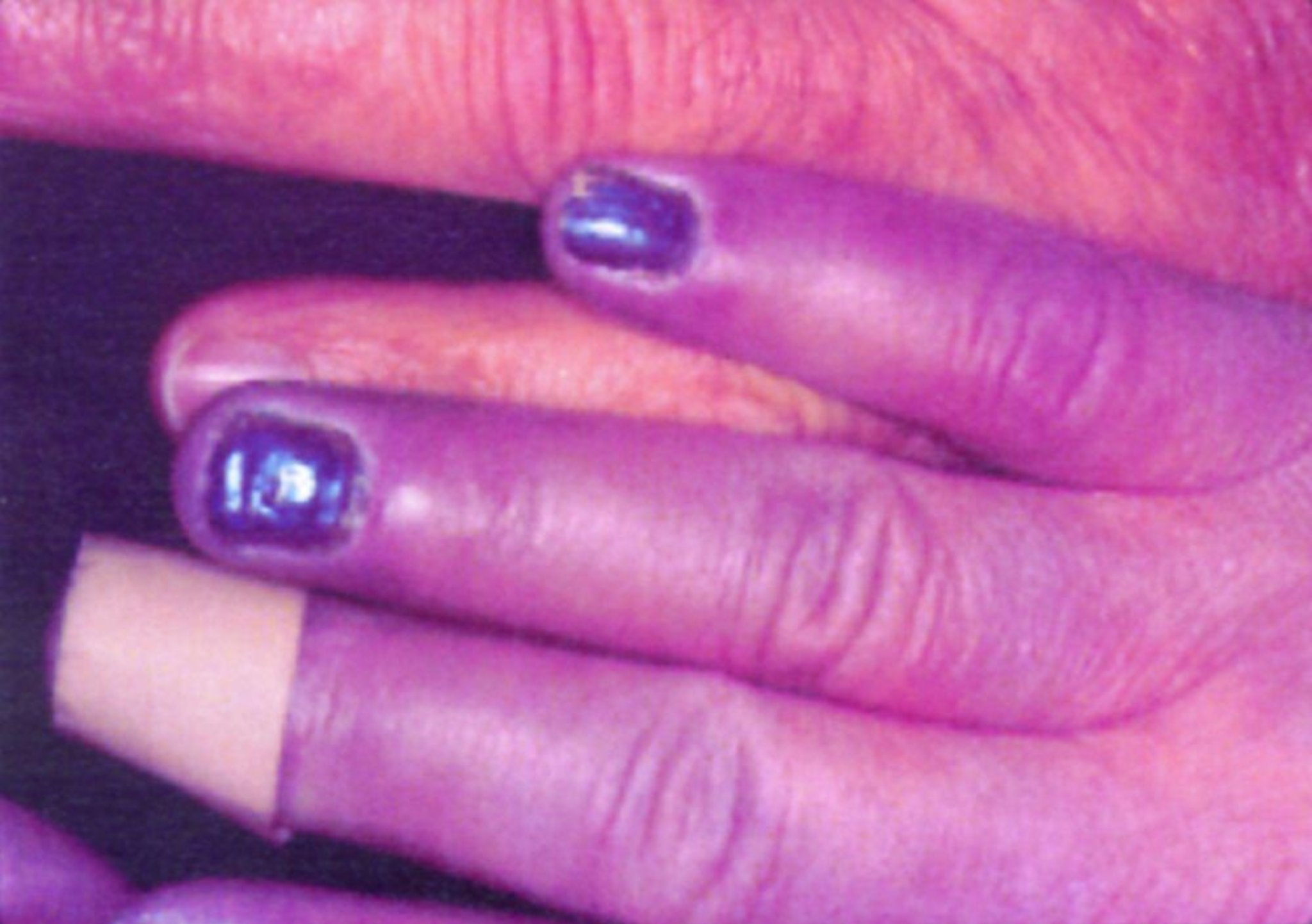Acrocyanosis is persistent, painless, symmetric cyanosis of the hands, feet, or face caused by vasospasm of the small vessels of the skin in response to cold.
Topic Resources
© Springer Science+Business Media
Acrocyanosis usually occurs in women and is not associated with occlusive arterial disease. The digits and hands or feet are persistently cold and bluish, sweat profusely, and may swell. In patients with darker skin, the skin may not appear blue, but there is still a distinct contrast in color. Clinical findings are due to vasospasm of small vessels and can be brought on by exposure to cold or stress. Etiology is unknown.
In acrocyanosis, unlike Raynaud syndrome, cyanosis persists and is not easily reversed, trophic changes and ulcers do not occur, and pain is absent. Pulses are normal. In contrast to cyanosis that occurs in systemic conditions (eg, sepsis, hypoxemia), acrocyanosis involves only the hands and feet.
Health care professionals diagnose the disorder based on symptoms that are limited to symmetrical involvement of the patient’s hands or feet and that persist even though pulses in the larger arteries (such as in the wrist and ankle) are normal.
Treatment, other than reassurance and avoidance of cold, is usually unnecessary. Vasodilators may be tried but are usually ineffective.


